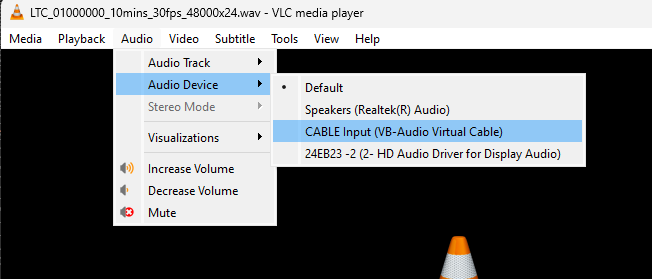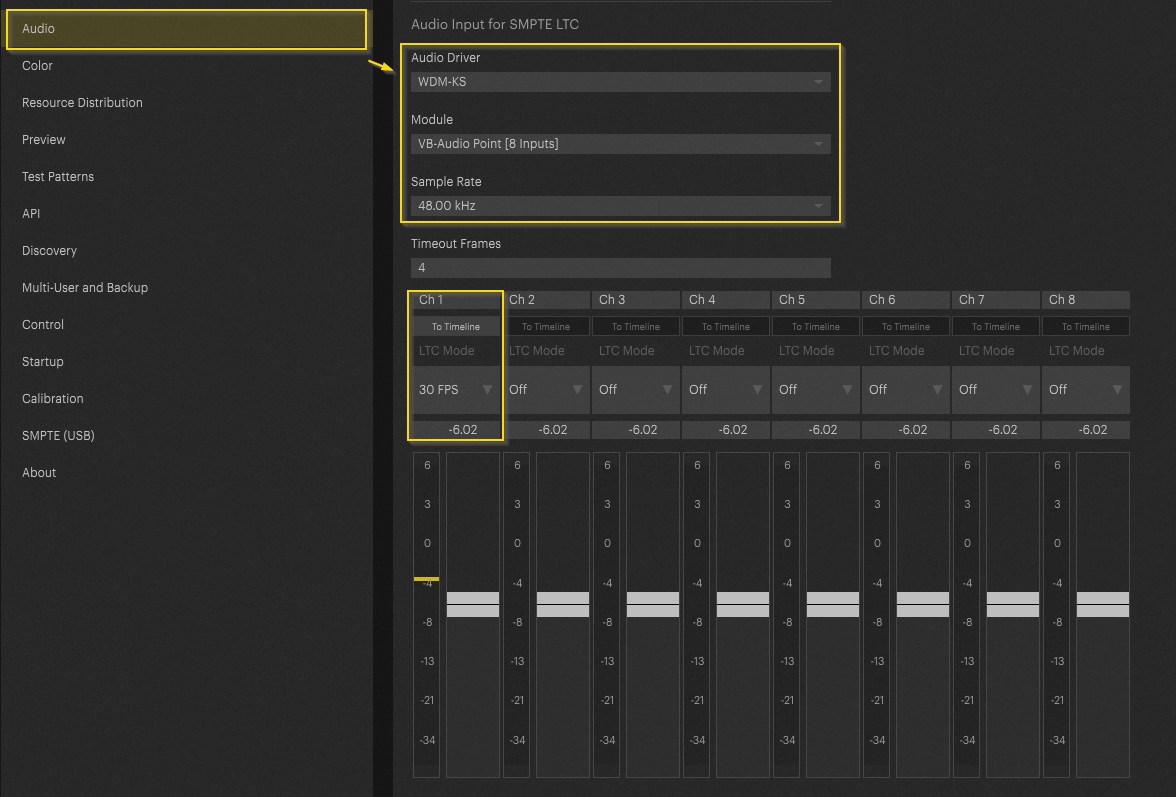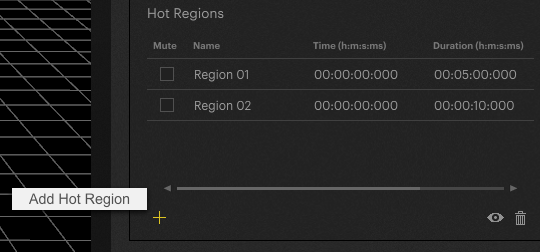LTC via AUDIO IN AND SMPTE HOT REGION
In PIXERA 2.0 it is now possible to receive timecode via Audio In. This increases the flexibility of the software in use.
In addition, the new "Hot Regions" function allows a timeline to listen only to certain sections of an incoming timecode. Outside of these sections, the timeline can be operated locally on the system.
Timecode IN via Audio (LTC)
Starting with PIXERA 2.0 it is possible to receive and manage timelines through LTC via Audio in. The audio-source can be digital (for example Dante or like in this case a virtual soundcard) or analog.
By utilizing SMPTE Hot Regions, certain parts of timelines can be controlled via SMPTE timecode. Traditionally only the timeline was controllable via timecode.
By defining "hot regions" in the timeline settings, certain time regions can be set hot to be controlled by the received timecode. As soon as the locator leaves the hot region, timecode control will stop, and the timeline returns to regular playback.
The settings can be found in the timeline options. Hot Regions can be set up for multiple timelines.
For this article timecode was played back locally from the VLC player.
Timecode was generated using this homepage:
To be able to feed the audio stream into PIXERA, a digital audio interface was used. However, audio can be distributed by analogue sources as well.
Following the installation, simply playback the Timecode via VLC and change the audio device to the virtual soundcard:

In this case the timecode has a length of 10 minutes, 1 hour offset 30 fps, 48kHz sample rate and 24 bit.
By simply playing it back in the VLC player and selecting the cable device we will be able to receive the signal in PIXERA.
Timecode setup in PIXERA
The Audio input settings inside PIXERA can be accessed in the “Settings - Audio Tab”.

- Setup the correct Audio Input Driver (WDM in this case).
- Module corresponds to the input device.
- Set up the correct Sample Rate, FPS and route the input to the desired Timeline by activating “To Timeline”.
NOTE
Timecode can be configured with the SMPTE in interface as well. Please refer to this article: SMPTE Timecode
Please make sure you have set the “device type” in settings > SMPTE Timecode to “Audio” Otherwise PIXERA will not react to the incoming TC if still set on USB or API.

Timeline Setup
Timeline settings must be changed. Select the correct timeline and configure the SMPTE settings as needed.

Hot regions can be defined in the SMPTE settings. By pressing + additional hot regions can be added to the selected timeline.

The hot region will be highlighted on the timeline with a green indication line:

For general information about the timecode settings please refer to: SMPTE Timecode
Possible Workflow example
Different offsets can be assigned to individual timelines. Example:
Song One - Timecode starts at 00:00:00:001
Songe Two - Timecode starts at 01:00:00:001
Song Three….
By creating multiple timelines and setting up the different timecodes (+1 hour, +2 hours,…) individual timelines can be triggered with different songs in complete timecode sync
 Contact Us
Contact Us


